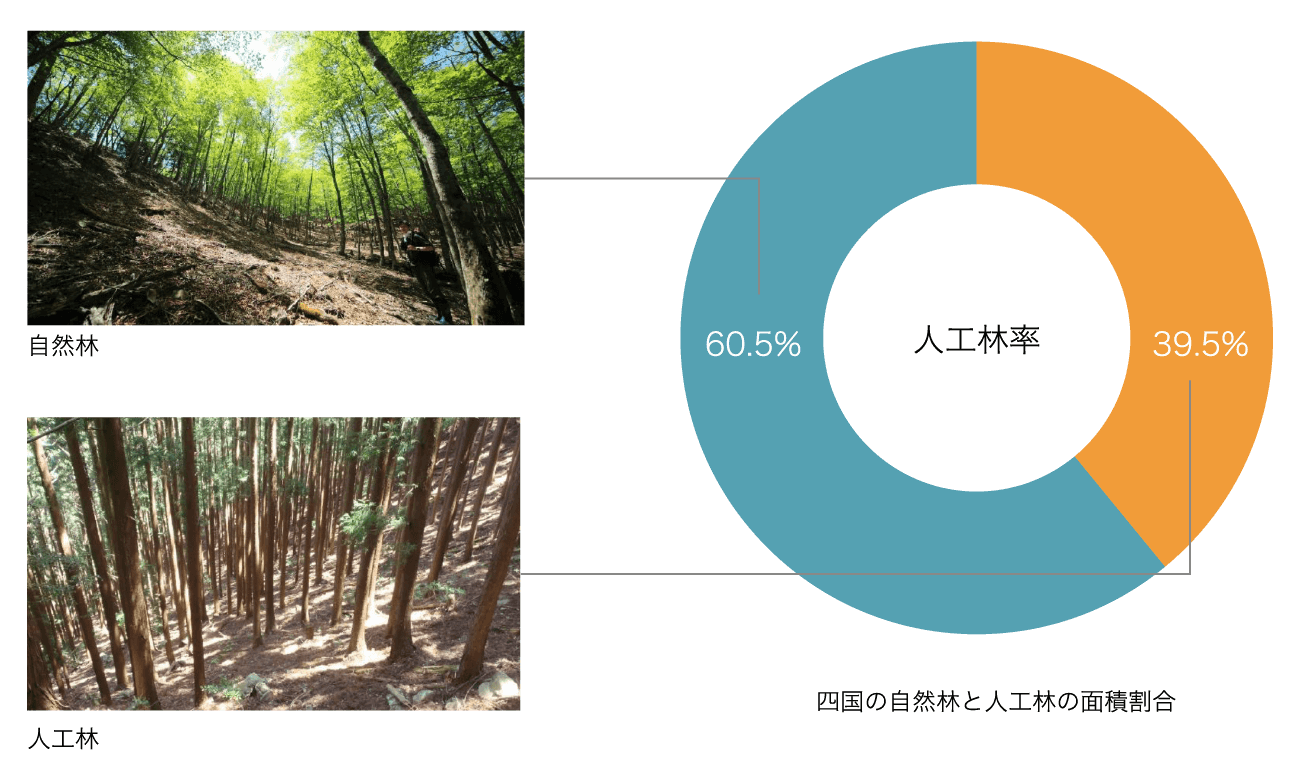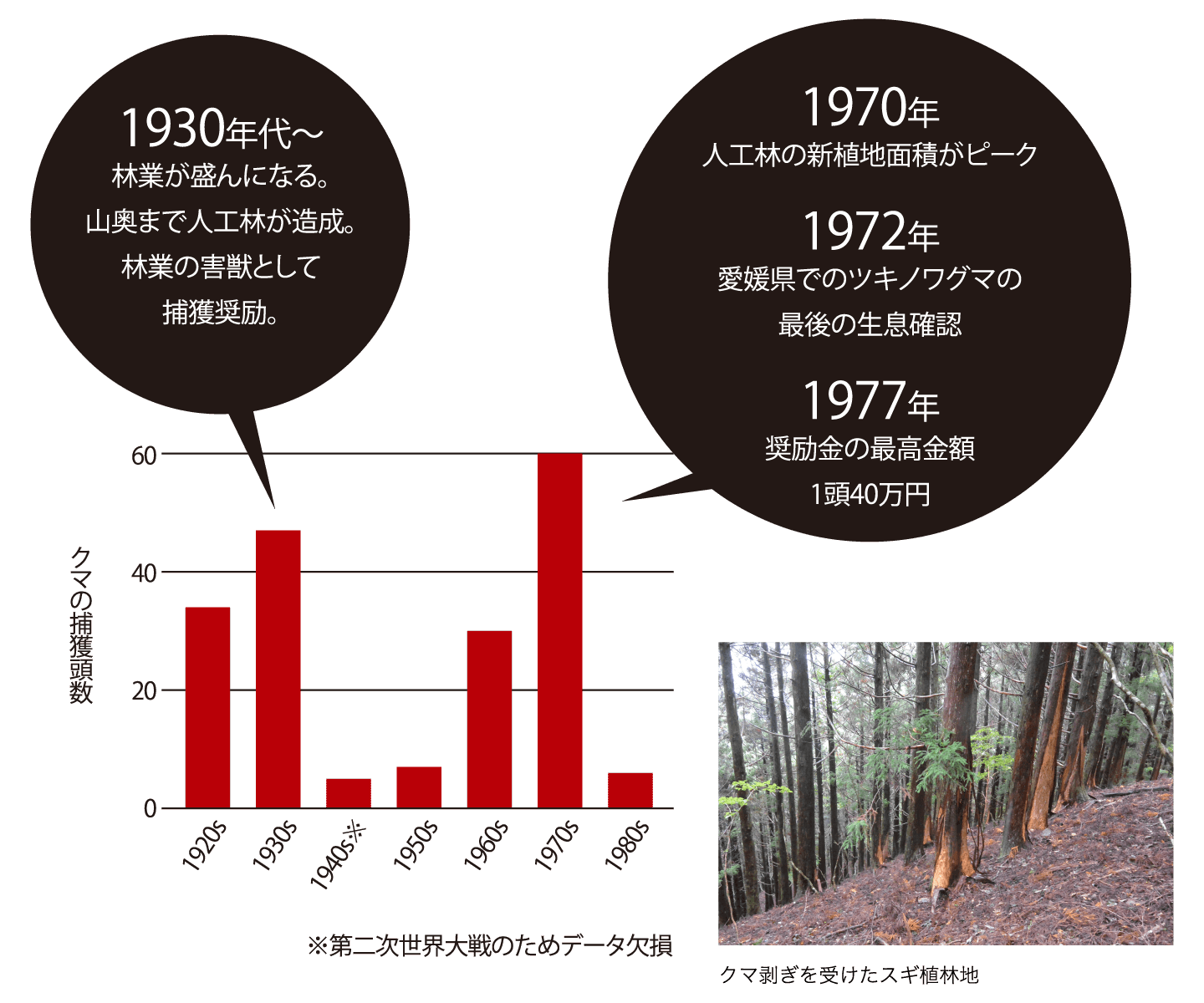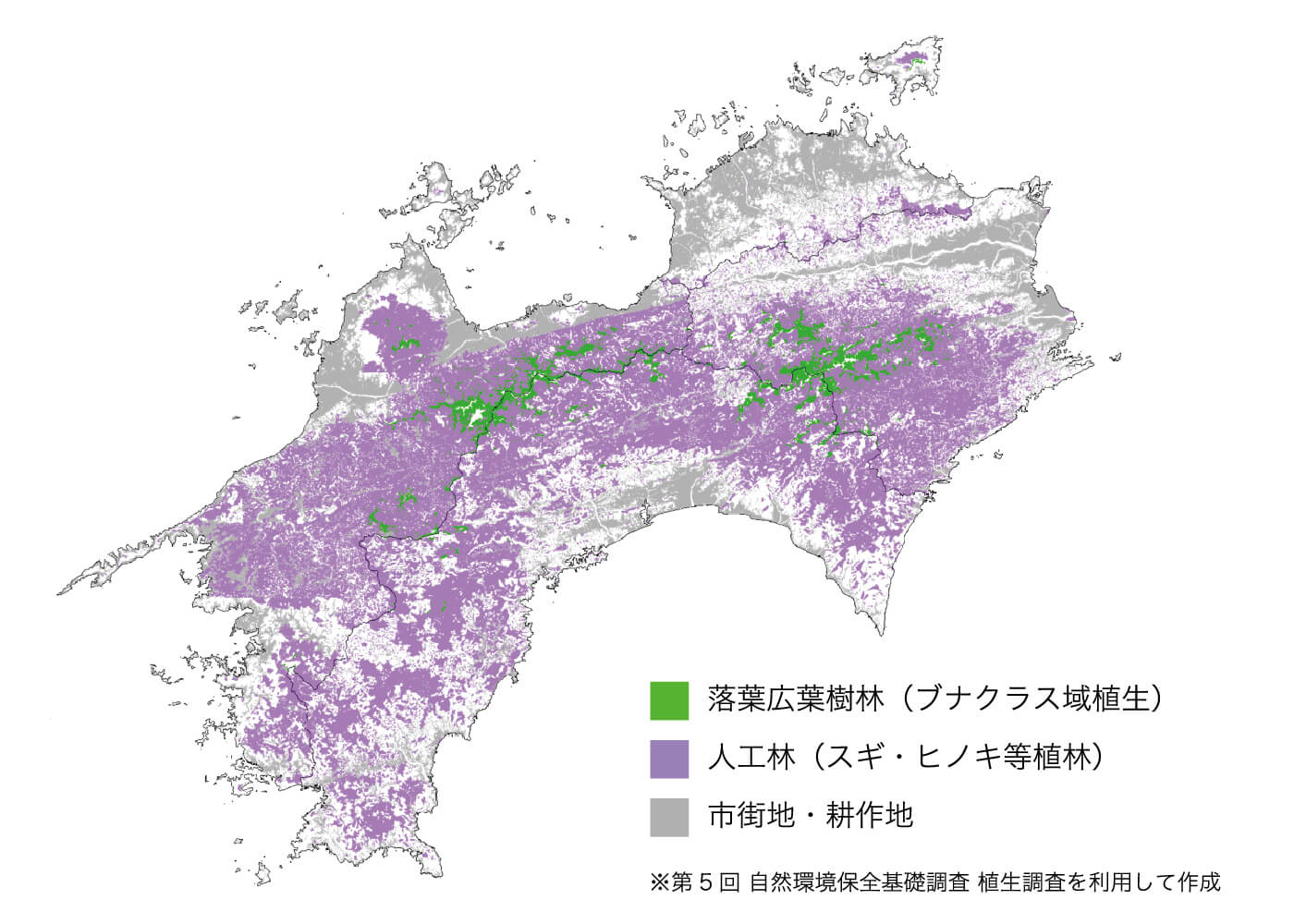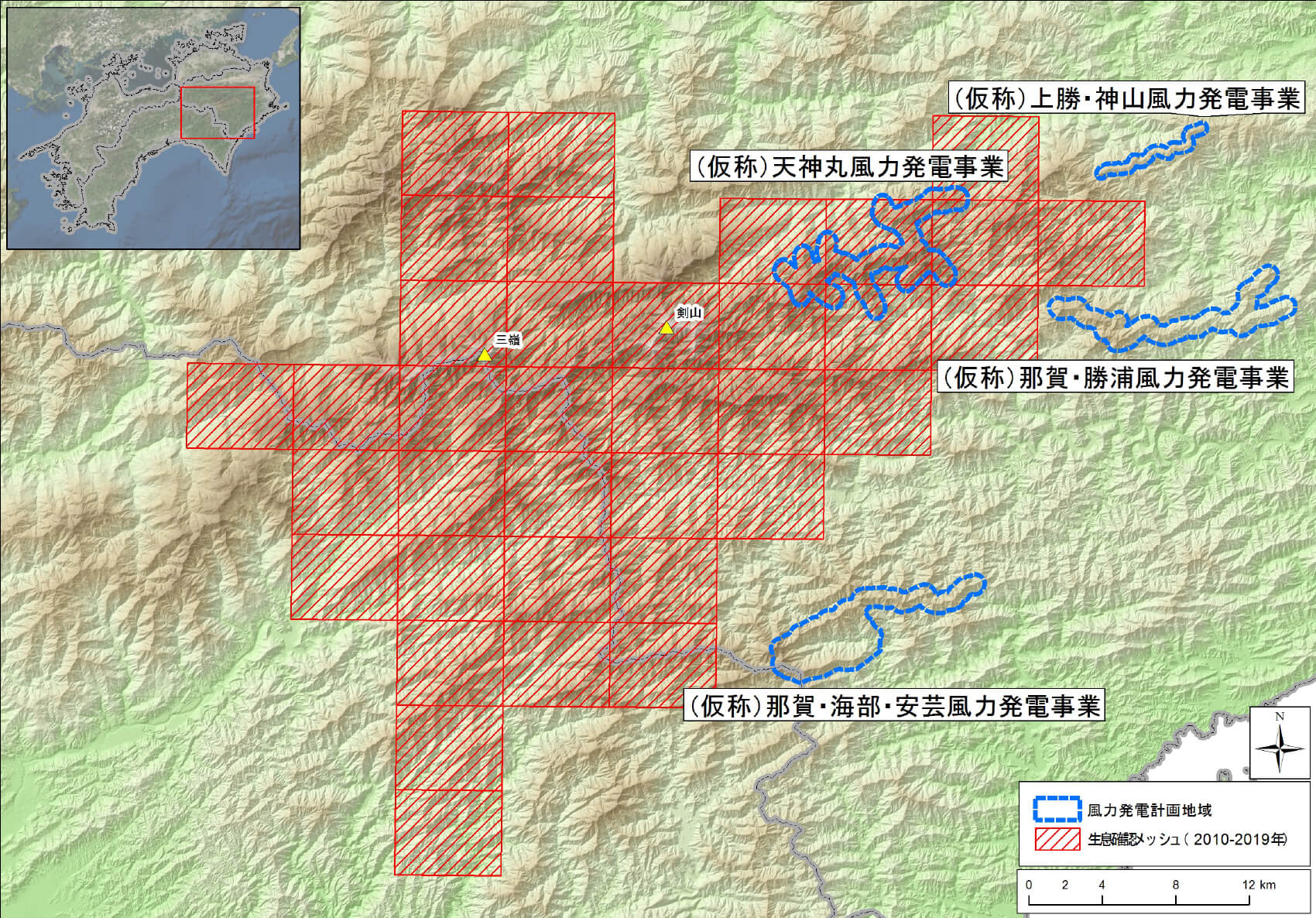Factors in the Decline
1) Historic Forest Development
Since long ago, trees have been planted in Japan's mountains for the production of timber. Shikoku is one of the most forested areas in the country, and forestry has long supported the local economy. During the Meiji and Showa periods, native forests were logged throughout Japan to meet high demand for timber. In most of the logging sites, afforestation was carried out to plant coniferous trees such as cedar and cypress, which make for a good source of timber. However, such artificial forests lack biodiversity and provide little food for Asiatic black bears. In particular, demand for timber surged during the period of rapid economic growth after World War II, and the government implemented a policy of "expanded afforestation" in order to secure timber. Compared to the afforestation area in 2017 (92 ha), Kochi Prefecture's area of afforestation in 1975 (4,470 ha) during the period of afforestation expansion was about 49 times larger, demonstrating how active the forestry industry was at this time. As a result, native forests suitable for Asiatic black bear's habitat were significantly reduced.
Today, 60% of Shikoku's forests have been replaced by planted forests, the highest percentage in Japan. In addition, due to the recent slump in the price of domestic timber, planted forests have been left uncut as they are no longer profitable. The artificial forests that cover the backcountry continue to degrade the quality of Asiatic black bears' habitat.

2) Extermination
Asiatic black bears strip the epidermis of cedar and cypress and feed on the inner trunk cambium. This behavior, commonly referred to as "bear stripping," caused great nuisance to forestry workers because it reduced the value of timber that had been cultivated over a long period of time. Forestry, a major industry in Shikoku, and Asiatic black bears were at odds with one another, and from the 1920s, the government aimed for a large-scale culling, offering bounties for bear capture. In the postwar period, box traps were introduced to capture bears more efficiently, and the number of bears culled rose dramatically. Conflicts with forestry became so serious that in the 1970s a bounty of 400,000 yen (approx USD$3,308) was offered for the extermination of a single bear. As a result, Asiatic black bears disappeared from all parts of Shikoku save the present-day Tsurugi Mountain range. This shows that an animal like the Asiatic black bear, with its low rate of population increase, can be driven to extinction easily at the hands of human beings.

Crisis Factors Threatening Their Survival
Habitat quality (Insufficient suitable habitat)
Within the Asiatic black bears' current habitat, there are large areas of artificial forests left unmaintained. These man-made forests lack food resources and are unsuitable for Asiatic black bears.
Other human-induced factors such as roads and residential areas, which Asiatic black bears avoid, may hinder migration and isolate them within their current habitat. In order to increase habitat quality and distribution, it is necessary to re-convert neglected planted forests into broadleaf forests and to improve the connectivity of fragmented habitats.

Current Forest Development (e.g. wind power generation)
It is known that the movement of Asiatic black bears in Shikoku traces the native forests left atop ridges at high elevations. Most wind power generation projects are planned and installed over several tens of kilometers of such ridges where favorable wind conditions are available. Therefore, depending on the location of wind power generation facilities, it could result in large-scale alteration of Asiatic black bear habitat and native forests that are crucial for their future recovery. The implementation area for such development projects needs to be selected carefully.

Risk of Mistaken Capture
To date, there have been no reported cases of mistaken capture in Shikoku. However, a male individual was once found that was presumed to have lost a forelimb due to a “kukuri” snare trap. For Asiatic black bears in Shikoku, whose population is extremely small, human-caused mortality has a significant impact on the survival of the population, so it is necessary to strengthen measures to prevent mistaken capture and avoid human-caused mortality.
